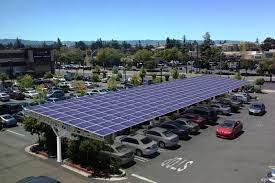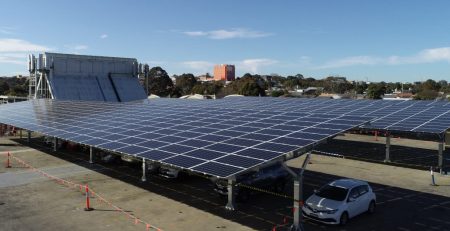Charging the Future: Solar Car Chargers and EV Charging in Australia
The world is at a pivotal moment in the transition to cleaner and more sustainable forms of transportation. In Australia, the abundant sunshine provides a unique opportunity to harness the power of the sun for electric vehicle (EV) charging. Solar car chargers and solar EV charging stations are at the forefront of this green revolution. This article explores the significance of solar car chargers, Solar EV Charger Australia, and EV solar charging in Australia’s journey towards a more sustainable transportation ecosystem.
Solar Car Chargers: A Glimpse into the Future
Solar car chargers are a technological marvel that uses photovoltaic panels to capture solar energy and convert it into electricity to charge electric vehicles. Australia’s climatic conditions make it an ideal location for the deployment of solar car chargers.
The Benefits of Solar Car Chargers
Clean and Renewable Energy: Solar car chargers use sunlight, a clean and renewable energy source, to power electric vehicles.
Reduced Carbon Footprint: Solar charging significantly reduces greenhouse gas emissions compared to conventional fossil fuel vehicles.
Energy Independence: Solar car chargers offer energy independence, reducing reliance on the grid.
Cost Savings: Over time, the investment in solar car chargers can lead to substantial cost savings as the energy source is free and sustainable.
Infrastructure Growth: The installation of solar car chargers can drive the growth of electric vehicles, fostering a more sustainable transportation landscape.
Solar EV Charger Australia: Leading the Way
Solar EV chargers in Australia play a pivotal role in the shift towards electric vehicles as a cleaner and more sustainable mode of transportation. These chargers are designed to provide fast and efficient charging, making electric vehicles a practical choice for daily use.

The Impact of Solar EV Charger Australia
Grid Integration: Solar EV chargers can be seamlessly integrated into the national grid, allowing for efficient energy storage and distribution to electric vehicles.
Urban Development: Solar EV chargers are an integral part of urban planning, with numerous public charging stations available for electric vehicle users.
Rapid Charging: Solar EV chargers are designed to provide rapid and convenient charging, reducing the time required to charge electric vehicles.
Environmental Stewardship: Solar EV chargers directly contribute to the reduction of emissions and the minimization of fossil fuel use in transportation.
Energy Resilience: By generating their electricity, these chargers reduce the impact of power outages and grid failures.
EV Solar Charging: A Holistic Solution
EV solar charging refers to the practice of using solar panels to generate electricity for electric vehicles. This approach integrates solar energy and electric vehicles, creating a holistic and sustainable transportation system.
The Key Elements of EV Solar Charging
Solar Panels: Solar panels, often mounted on carports or overhead structures, capture sunlight and convert it into electrical energy.
On-Site Charging: EV solar charging enables electric vehicle owners to charge their vehicles directly from the energy generated by the solar panels.
Energy Storage: Excess energy generated during the day can be stored for nighttime charging, ensuring a consistent supply of clean energy.
Environmental Benefits: EV solar charging significantly reduces the environmental impact of electric vehicle use, making it a greener choice for transportation.
Economic Savings: Over time, the investment in solar panels and EV charging can lead to substantial cost savings for electric vehicle owners.
Solar Charging Stations: Paving the Way Forward
Solar charging stations are the backbone of the EV charging infrastructure. These stations can be found at various locations, including shopping centers, public parking lots, and commercial properties, providing convenient access to clean energy for electric vehicles.

The Role of Solar Charging Stations
Ubiquitous Access: Solar charging stations are strategically placed to provide electric vehicle users with easy access to clean energy.
Charging Versatility: These stations offer different charging speeds to accommodate the needs of various electric vehicle models.
Grid Support: Solar charging stations can support the grid by feeding excess energy back into the network, enhancing overall energy efficiency.
Public Awareness: The presence of solar charging stations raises public awareness of the benefits of electric vehicles and clean energy.
Sustainability in Action: Solar charging stations serve as a tangible example of sustainable practices in action, encouraging individuals and businesses to embrace clean transportation solutions.
Australia’s Commitment to a Greener Future
Australia is committed to sustainability, evident in its transition to cleaner transportation options. The government has introduced several initiatives and incentives to promote the adoption of electric vehicles and solar charging infrastructure.
Government Initiatives
Financial Support: The government offers rebates and incentives for electric vehicle purchases and the installation of solar charging systems.
Charging Infrastructure: Funding and support for the expansion of charging infrastructure, including solar car chargers, solar EV charging stations, and solar charging stations.
Emissions Reduction Targets: The government has set clear targets for reducing carbon emissions and promoting the use of sustainable transportation options.
Promotion of Solar Energy: Government initiatives encourage the use of solar panel on car and solar charging systems to harness clean and renewable energy.
Conclusion
Solar car chargers, Solar EV Charger Australia, EV solar charging, and solar charging stations are driving Australia’s commitment to sustainability and cleaner transportation solutions. As the world embraces electric vehicles and renewable energy, these technologies are pivotal in achieving a greener and more sustainable future.




Leave a Reply